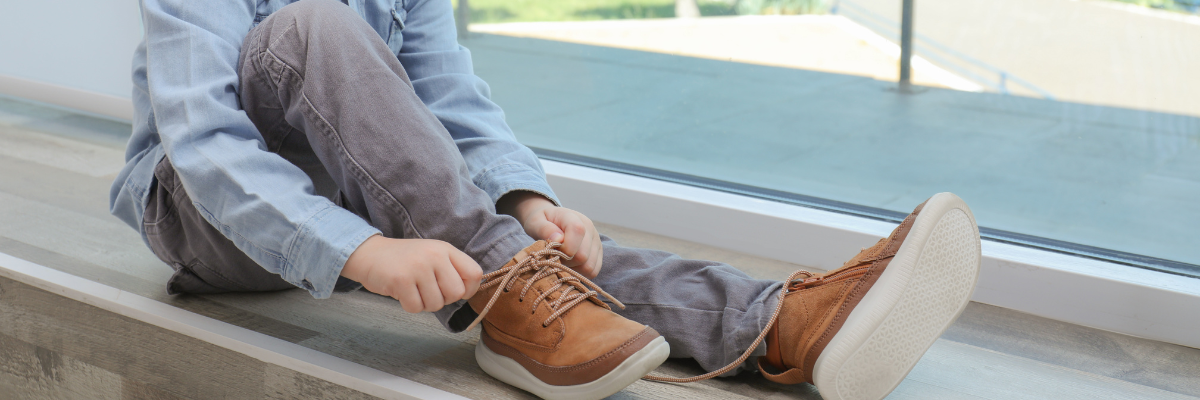Why is learning shoe tying so important?
Parents typically think about tying shoes just before, or around Kindergarten. However, many children are around age 6 or older when they are ready to learn this task. This is because this task requires fine motor skills of dexterity, in-hand manipulation, and bilateral coordination. That is why it is important to make sure the child is ready for the task before introducing something too challenging or potentially discouraging. Knowing all the skills that shoe tying incorporates should also bring to light what a great opportunity shoe tying is – you can work on dexterity, in-hand manipulation, and bilateral coordination every single day! No matter what method you use, tying shoes requires learning and recalling several steps in a row. This helps to build sequencing skills, visual memory, motor planning, focus and attention to complete the task.
Why does my child want to give up on shoe tying?
When putting your shoes on, it’s typically when you need to go somewhere. In the routine of trying to get to school, a play date, the doctor, or even therapy sessions, sometimes you may be in a rush. Parents tend to buy their children shoes that have permanently tied laces, flip flops, crocs or velcro straps. Parents want to make things easier for their children. If you can avoid a struggle, why not? Although getting through the days can be tough for a parent, patience is a beautiful thing to foster in a society that can’t seem to wait for anything. Making something easier might seem good now, but not necessarily in the long run. When a child is learning how to tie their shoes in therapy, we ask that they practice a lot at home as well. This is because one time a week isn’t going to make much of a difference. The more they practice and the more they are encouraged by parents, the faster and stronger they’ll be with this challenge.
What shoe tying tips will help my child learn?
1) Learning step by step on a shoe placed in front of them (tabletop level) – It is easier for children to learn how to tie their shoes on a tabletop level before learning how to tie it on their own foot. Some children practice in a long sit on the floor with a jump rope tied around their knees so that the movements are bigger and easier to understand. Your child can also practice on your shoes to make it more fun and motivating.
2) Having different colored laces (ex. 1 black lace 1 white lace) – This way, when explaining step by step, it is visually easier on your child to understand the difference in the laces and see each step visually.
3) Practice, Practice, Practice! – It takes time! Do not think it will happen overnight. Continue to practice and they will begin to get the hang of it! Don’t give up!
4) Use Backwards Chaining Techniques
Backwards Chaining is a technique used to teach difficult tasks by breaking them down into smaller parts. Backwards chaining occurs when an adult does each step of the task and allows the kid to do the very LAST step on their own. Essentially: breaking down the steps of a task and teaching them in reverse order. This gives the child an experience of success and completion with every attempt.
Below are the verbal cues we use at Carolina Therapy Connection for each step to teach the kiddos how to tie shoes! You can substitute your own steps for alternate methods:
- Criss Cross or Make an X
- Black Under White
- Pull Tight
- Make a loop or bunny ears
- Push through
- Pull tight
5) Laces are important! – Short laces are infuriating and difficult to manage when first learning this task because the child doesn’t plan ahead to leave enough room. Round laces easily fall untied, so flat ones are usually easier. Practicing with wire ribbon or pipe cleaners can help because it keeps its shape better than laces and allows the child to loosen their grip between each step.
The Takeaway Message
There are going to be some children that just can’t master this skill, and might they have other things that are much more important for them to be working on. In those situations, adaptive laces or shoes are a wonderful option. For many children, it’s simply about finding the right way to teach them, and following through with the practice it takes to master it. If your child is struggling with their self-care or fine motor tasks, call our clinic at (252) 341-9944 to set up a FREE screening! We will be happy to help you in whatever way we can.











